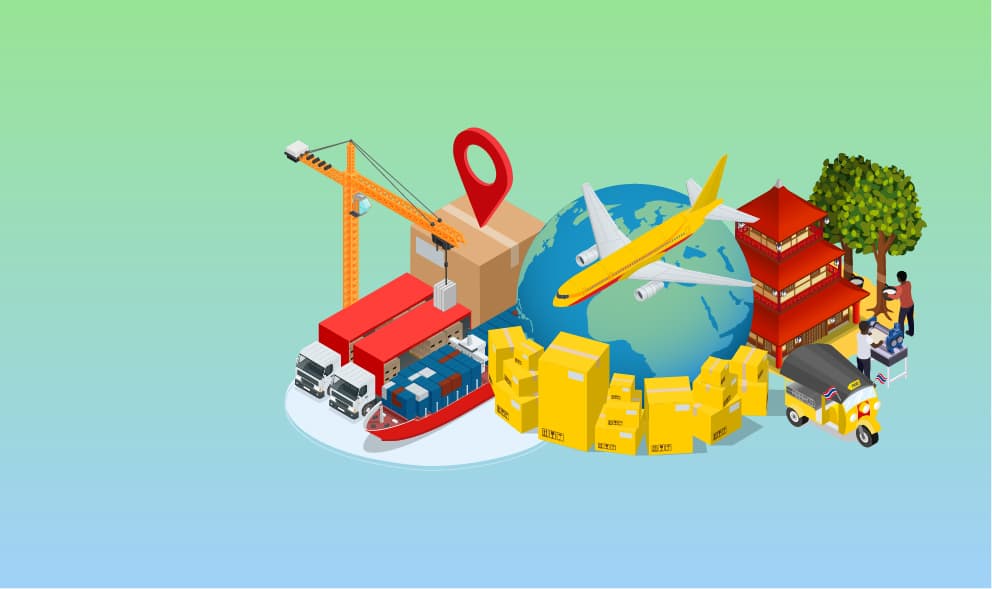
For the Nigerian business owner navigating the complexities of forex volatility, fuel subsidy removals, and the high cost of logistics, global investment trends can often feel disconnected from the daily grind of keeping the lights on. Yet, if you look at the headlines, 2024 was touted as a miracle year for the continent. While foreign investment shrank in much of the developing world, Africa defied the odds with a massive 75% surge in Foreign Direct Investment (FDI), hitting a record US$97 billion.
But as any Lagos trader or Kano manufacturer knows, headline numbers rarely tell the full story. A closer look at the data from the DHL GIBS Development Series reveals a nuanced picture. A staggering US$35 billion of that total went to just one country for just one project: the Ras El Hekma urban development in Egypt.
However, even if you strip out that anomaly, African FDI still grew by 12%. The world is still betting on Africa. The pressing question for Nigerian captains of industry is simple: with our economy currently "under reconstruction," who are the regional competitors capitalizing on these inflows, and what strategic insights can we apply to ensure Nigeria remains the preferred destination for capital?
Where the Money Went: Key Hotspots, not Everywhere
FDI growth is concentrated. Beyond Egypt’s big deal, destinations like Ethiopia, Côte d’Ivoire, Mozambique and the DRC drew large projects. Other regions, and many African countries, saw little change. That patchiness matters for South Africa: regional neighbours and continental trade links will drive where future manufacturing and logistics hubs appear.
The Game of Regions: Key Insights
North Africa: Speed and Strategy
Right now, North Africa is winning the "Game of Regions". Egypt is the continent’s undisputed heavyweight, attracting US$47 billion in 2024. Beyond their lucky geography near Europe and the Middle East, they are creating their own luck through policy. Egypt introduced the "Golden Licence", a mechanism that cuts through red tape by offering a single approval for key projects. It’s a lesson in efficiency that many African bureaucracies could learn from.
Then there is Morocco. For years, South Africa and Morocco have vied for the title of Africa’s automotive hub. Morocco is currently edging ahead, producing 570,000 vehicles in 2023. Their success isn't accidental; it’s driven by world-class infrastructure like the Tanger Med port and a strategic pivot toward Electric Vehicles (EVs).

West Africa: The Giants Awakening
West Africa is a story of immense potential navigating through a period of structural correction.
Nigeria: The Giant Under Reconstruction
Nigeria holds the highest stock of FDI in the region, but inflows have been volatile. The country is currently undergoing "acute economic pain for future FDI gain" under President Tinubu’s reforms.
What you should know about the trends: There is a massive pivot from oil to gas, exemplified by the US$25 billion Nigeria-Morocco gas pipeline project. Additionally, the "soft power" of Nollywood is becoming a hard economic asset, with entertainment exports projected to hit US$15 billion by 2030.
Key Success Factors boils down to structural correction: removing the fuel subsidy and floating the Naira caused inflation to spike to 31%, but these moves were essential to stop the "bleeding" of state finances and restore investor confidence in the long run.
Ghana: The Stable Alternative
Ghana relies on its reputation as a stable democracy to attract investment. Despite a debt default in 2022, an IMF deal in 2023 has helped restore confidence.
The prevalent trend: Ghana is aggressively targeting "agro-processing," specifically trying to process its own cocoa rather than selling the beans raw. It is currently the world's third-largest exporter of cocoa paste.
The Key success factor is largely that of the country’s political stability. In a turbulent region, Ghana’s peaceful elections and independent judiciary remain its strongest selling points.
East Africa: The Reformers
In East Africa, the narrative is defined by bold economic reforms and a willingness to endure short-term pain for long-term stability. Ethiopia defied regional trends with a 20% rise in FDI inflows in 2024, reaching US$4 billion. This success is largely attributed to the government’s courageous decision to liberalize the economy. By floating the currency in 2024, a move designed to fix chronic foreign exchange shortages, and securing an IMF support package, Ethiopia signalled it is truly open for business. Further signaling this shift, the administration has launched the Ethiopian Securities Exchange and opened up the banking sector to foreign subsidiaries, moving away from its historically closed, state-led economic model.
Uganda is carving out its own niche by pursuing a dual-track energy strategy. The country attracted US$3.3 billion in 2024, driven by the development of the oil-rich Albertine Graben. However, the government is simultaneously positioning Uganda as a green energy destination. This approach was validated at COP28, leading to over US$400 million in green investment projects. Companies like Nexus Green are now manufacturing solar components locally to electrify rural areas, demonstrating that Uganda is successfully balancing traditional resource extraction with future-facing sustainable technologies

Southern Africa: Resilience and Resources
South Africa: The Resilient Phoenix
South Africa still holds the deep capital, with the highest stock of FDI in the region ($113bn). However, flows are lower than its potential. The story here is one of resilience: crises are becoming investment opportunities.
Major trends: The electricity crisis (loadshedding) sparked a boom in private renewable energy investment, which has grown by double digits annually since 2018. Similarly, the logistics crisis at Transnet has forced the state to bring in private partners, such as the deal with ICTSI to upgrade the Durban port.
The Two Key Success Factors:
Infrastructure Turnarounds: The shift from state monopolies to public-private partnerships in energy and logistics is unlocking new capital.
Industrial Depth: The EU’s investment in vaccine manufacturing highlights that SA’s sophisticated industrial base is still a major drawcard.
Mozambique: The Gas Frontier
Mozambique saw a staggering 42% increase in FDI in 2024, the highest growth in the region.
THe principal trend: This is almost entirely driven by Liquefied Natural Gas (LNG). With security improving in Cabo Delgado, TotalEnergies is preparing to restart its US$20 billion project.
The major success factor is that of resource abundance: the sheer scale of the gas reserves (3rd largest in Africa) makes Mozambique too big to ignore, provided security can be maintained.
What the Investment Champions did Right
Across the successful cases, a few recurring factors show up:
Big, credible projects that attract cluster investment (sometimes led by state or regional partnerships).
Policy clarity and targeted incentives that reduce transactional friction for investors.
Connectivity and logistics as enablers: ports, roads and air links that let FDI produce exports competitively.
A push for value-adding activities rather than letting raw materials be exported with little processing.

Productive vs Passive FDI (the Difference that Changes Outcomes)
Not all FDI creates the same development effects. The report draws a crucial distinction: FDI that on-shores processing and builds value chains (what it calls productive FDI) creates higher employment and more durable benefits than FDI that simply extracts and exports raw commodities. The Dangote refinery example, a multi-billion dollar project designed to process crude locally, is a clear model of how beneficiation lifts complexity and creates regional trade opportunities.
Conclusion
Africa’s 2024 FDI story is cause for cautious optimism: the continent is being noticed by global capital, but the benefits depend entirely on how countries convert inflows into productive activity. For Nigeria, the challenge is clear: attract capital that builds local capability, use logistics as a competitive edge, and push for policies that promote beneficiation and predictable investment conditions.
Read the full DHL GIBS report for a more in-depth view.














